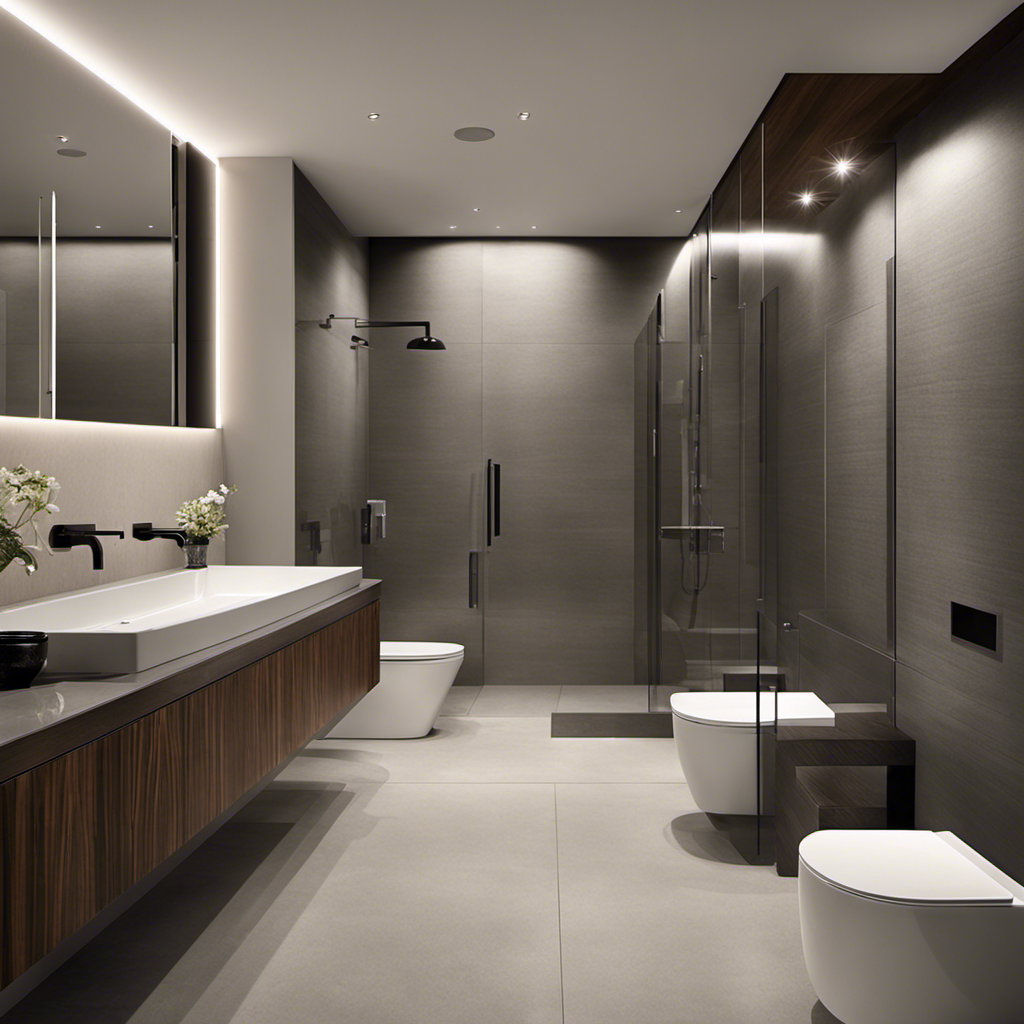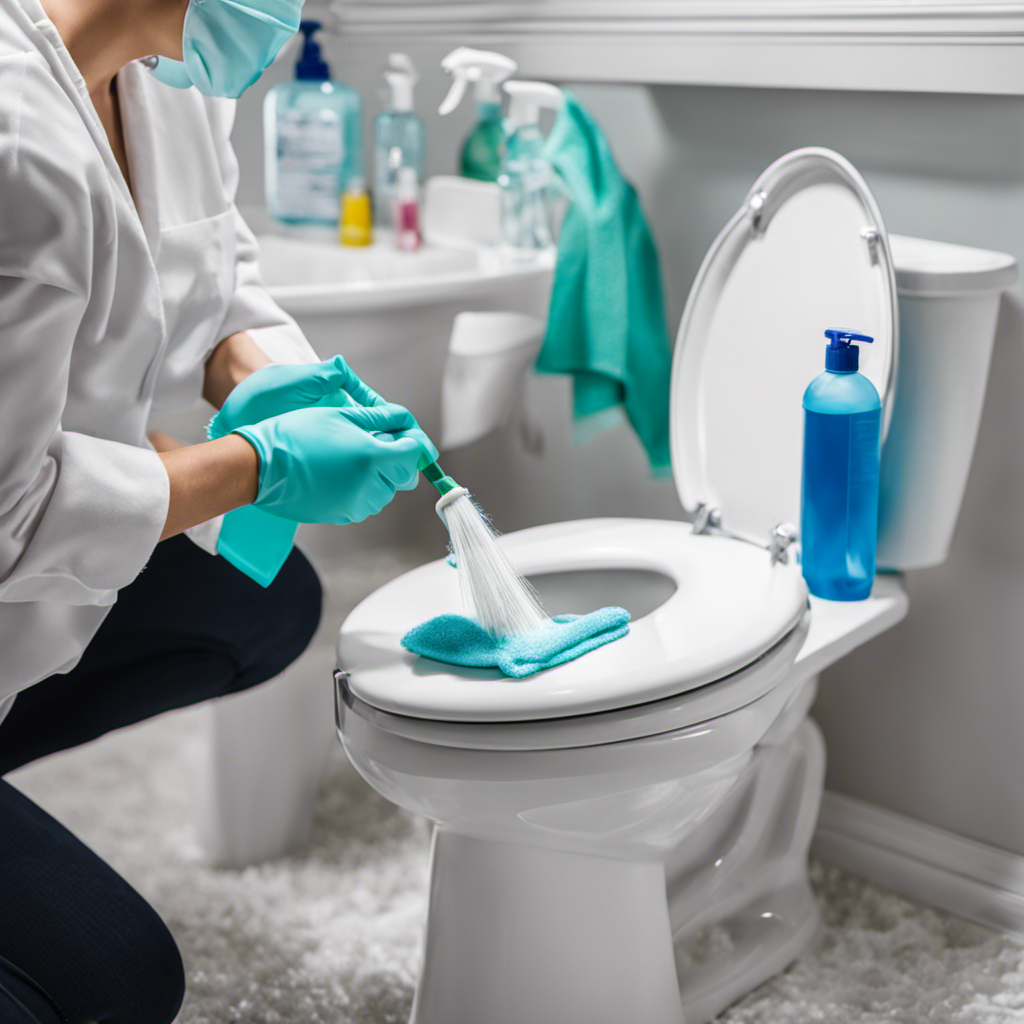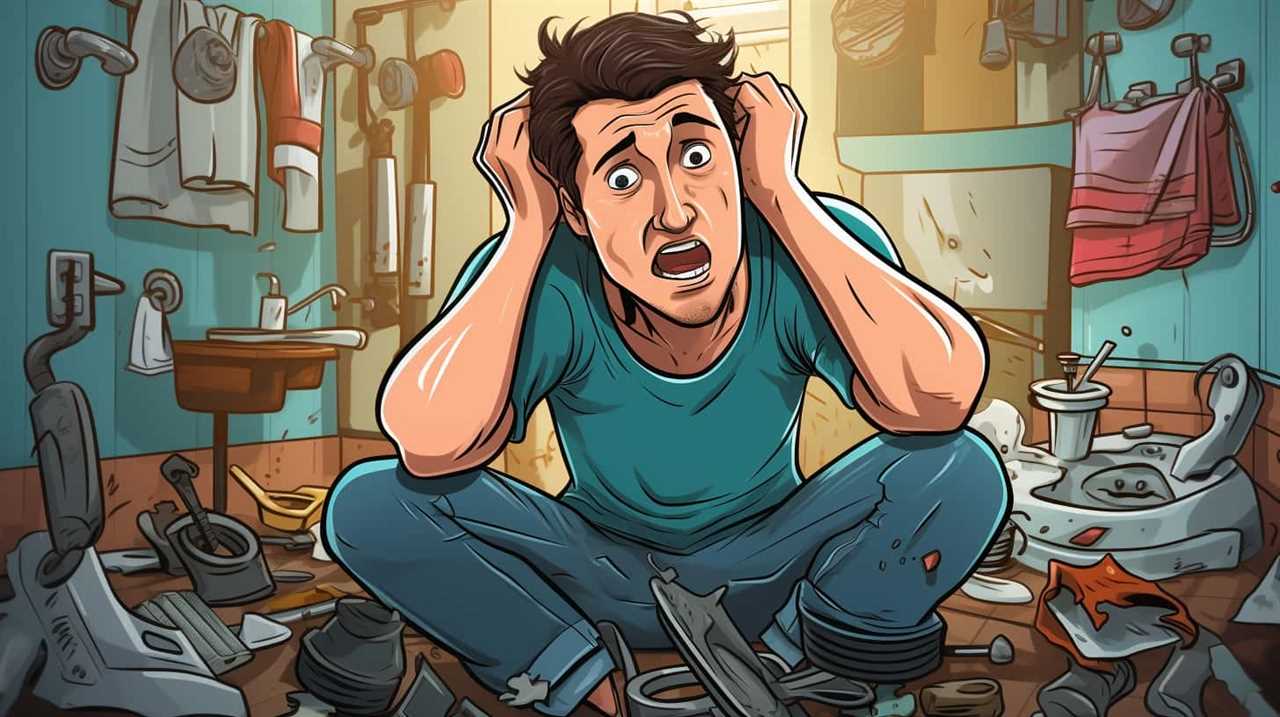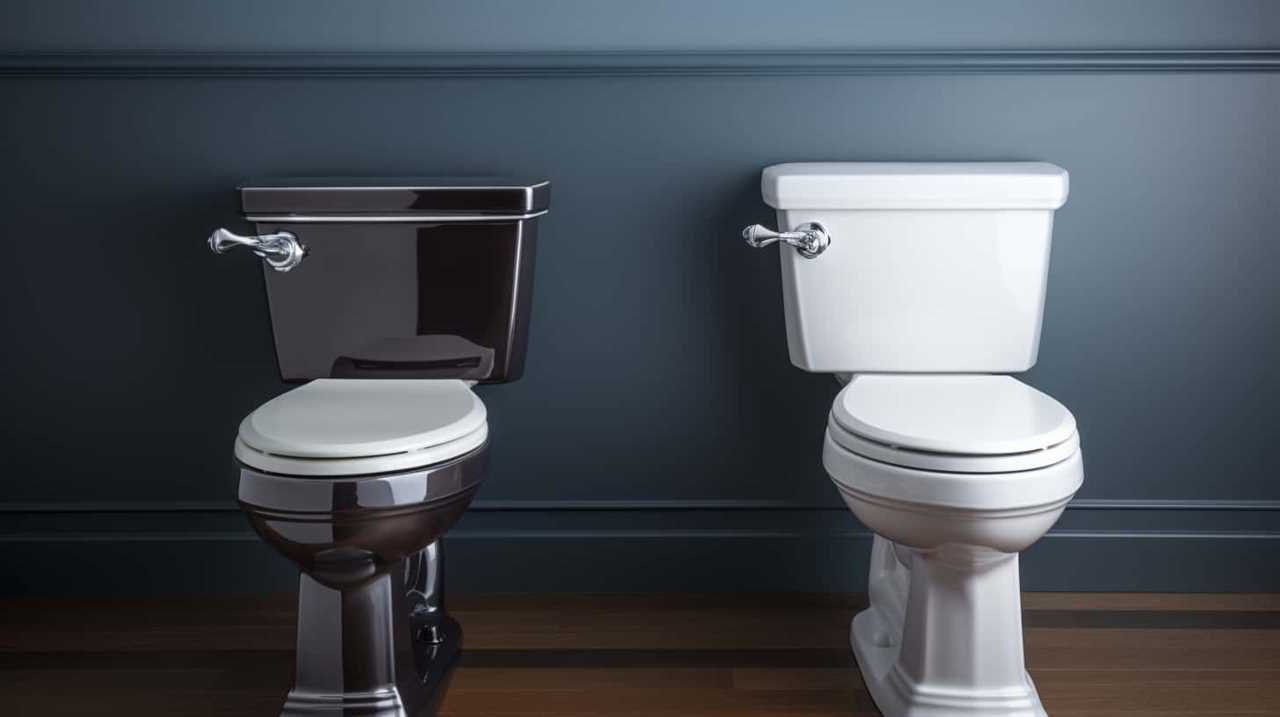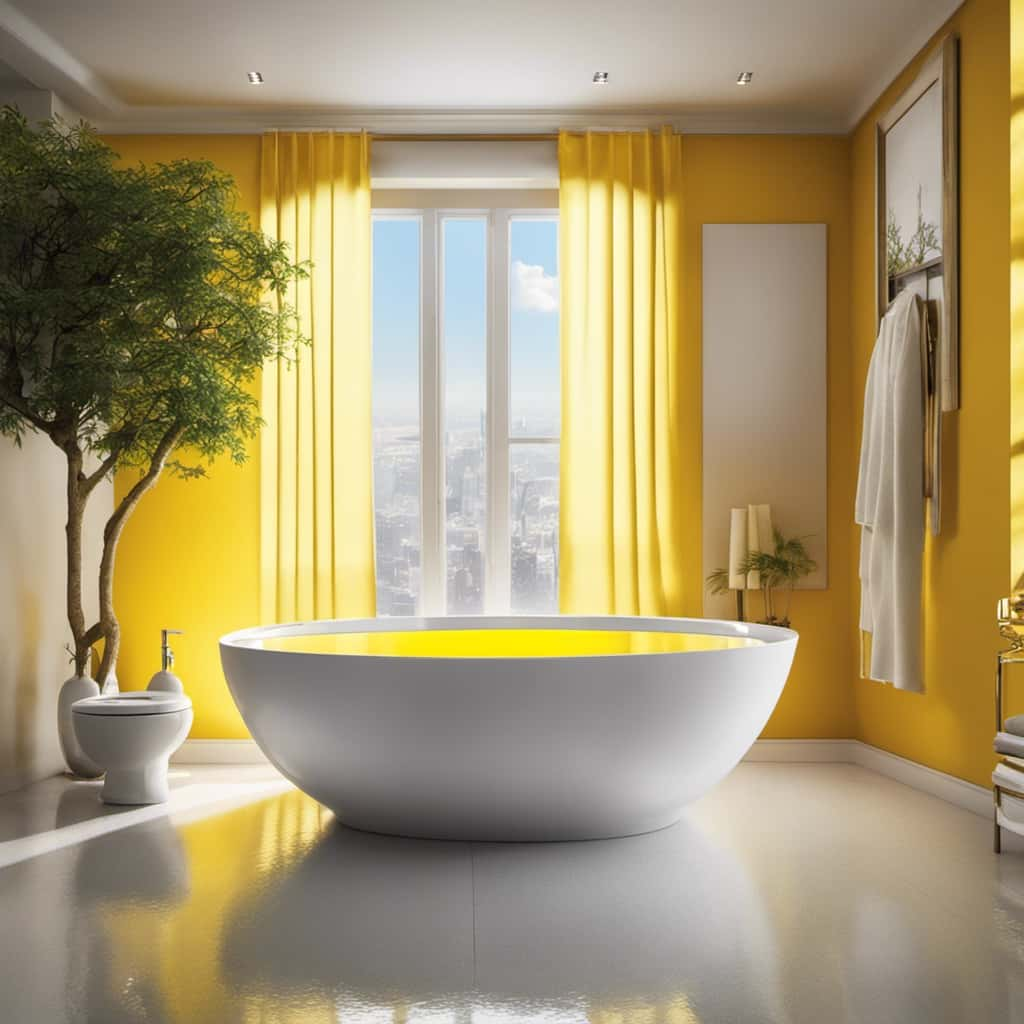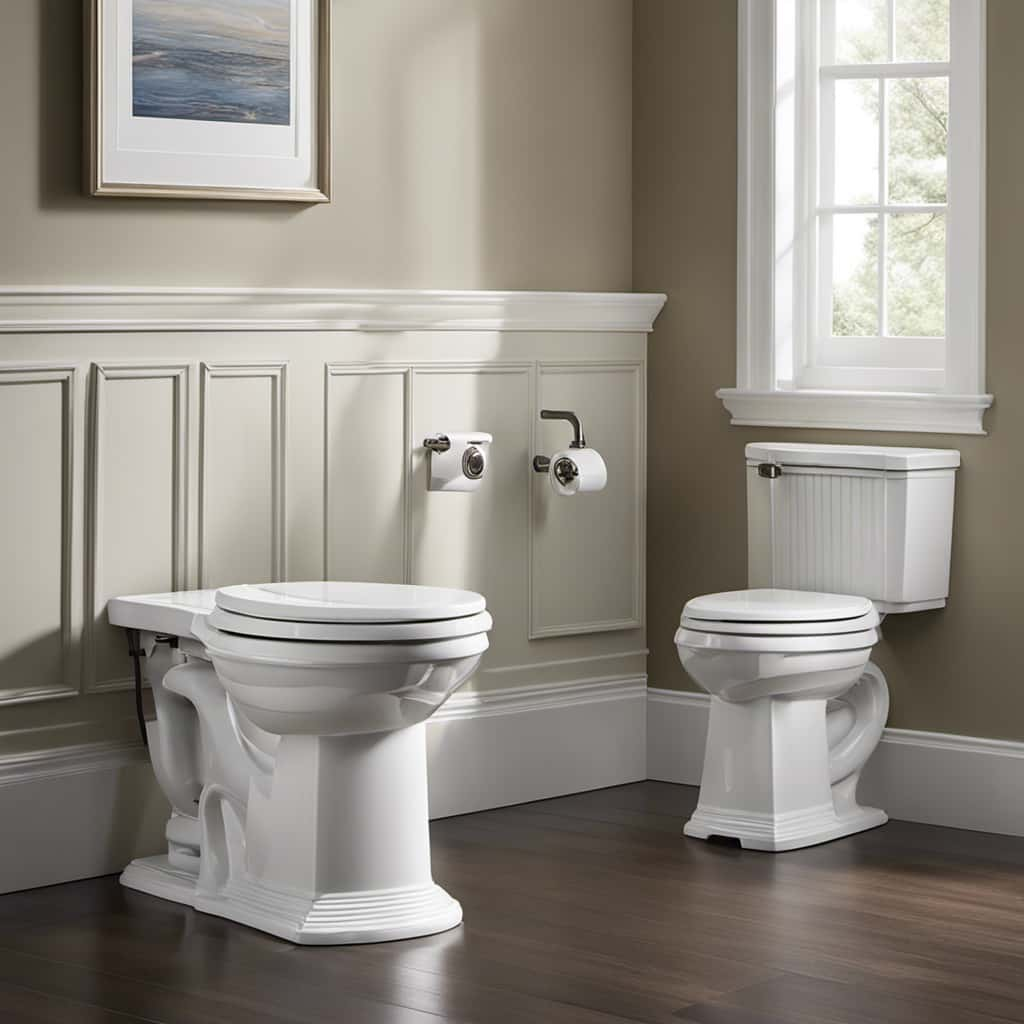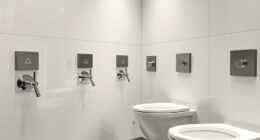I’ve got the inside scoop on the perfect trapway for your bathroom!
Exposed or concealed? That is the question. Let’s dive in and explore the pros and cons of both types.
Exposed trapways offer visual appeal and cost savings, while concealed trapways provide a sleek, clean look and are easy to maintain.
With sizes ranging from 1 3/4 to 2 3/8 inches, there’s an option for every bathroom.
So, whether you want to make a statement or embrace minimalism, I’ve got you covered.
Let’s find the trapway that’s perfect for you!
Key Takeaways
- There are three types of trapways: exposed, concealed, and skirted.
- Exposed trapways have visible S-shaped pipes along the side of the toilet, while concealed trapways have hidden S-shaped pipes at the back of the toilet bowl.
- Exposed trapways create an exciting curvature and can enhance the design of a bathroom, while concealed trapways provide a sleek appearance and a clean look from the side.
- Exposed trapways are relatively cheaper compared to concealed trapways, but concealed trapways are easy to clean and have a minimalistic design that complements contemporary-style bathrooms.
Pros and Cons of Exposed Trapways
I think an exposed trapway can add an exciting curvature to the design of my bathroom, but it might not provide as sleek of a look as a concealed trapway.
Exposed trapways have visible S-shaped pipes along the side of the toilet, creating a unique aesthetic appeal. They come in sizes ranging from 1 3/4 to 2 3/8 inches. One advantage of exposed trapways is their affordability compared to concealed trapways. However, maintenance can be a concern as the exposed pipes are prone to collecting dust and dirt, requiring regular cleaning.
On the other hand, concealed trapways offer a sleek and clean appearance from the side, making them a popular choice in contemporary designs. They are easy to maintain as there are no ridges where dirt can hide. Although slightly more expensive, their minimalistic design complements modern bathrooms.
Advantages and Disadvantages of Concealed Trapways
Concealed trapways offer a sleek and clean appearance from the side, making them a popular choice for contemporary-style bathrooms. They have hidden S-shaped pipes at the back of the toilet bowl, providing a minimalist design that complements modern bathrooms.
Here are the pros and cons of concealed trapways:
Pros:
- Sleek and clean appearance
- Easy to clean with no ridges for dirt to hide
- Enhances the visual appeal of the bathroom
- Keeps sewer gases away from the toilet bowl
Cons:
- Slightly more expensive compared to exposed trapways
- Installation may require professional assistance
- Limited availability of styles and designs
- Maintenance may be more challenging due to the concealed nature
When installing a concealed trapway, it is crucial to follow the manufacturer’s instructions and seek professional help if needed. Regular maintenance, such as cleaning and inspecting for any blockages, is essential to ensure proper functioning. Overall, concealed trapways offer a modern and streamlined look, but proper installation and maintenance are key to enjoying their benefits.
Factors to Consider When Choosing Between Exposed and Concealed Trapways
When considering trapway options, it’s important to take into account factors such as cost, design, and maintenance requirements.
One of the key factors to consider when choosing between exposed and concealed trapways is the cost comparison. Exposed trapways are relatively cheaper compared to concealed trapways. This can be an important consideration for those on a tight budget.
Another factor to consider is the design. Exposed trapways create an exciting curvature and can enhance the design of a bathroom. On the other hand, concealed trapways provide a sleek appearance and a clean look from the side, which complements contemporary-style bathrooms.
Lastly, maintenance requirements should also be considered. Concealed trapways are easy to clean as there are no ridges where dirt could hide.
Ultimately, the decision between exposed and concealed trapways will depend on your budget, design preferences, and maintenance needs.
Design Considerations: Exposed Vs. Concealed Trapways
From a design perspective, it’s important to consider the visual impact of exposed and concealed trapways in a bathroom. Both types have their own unique aesthetics and style impacts, which can greatly enhance the overall look and feel of the space.
Here are some key points to consider when choosing between exposed and concealed trapways:
-
Aesthetics and Style Impact: Exposed trapways create an exciting curvature and can add a touch of elegance to the bathroom design. On the other hand, concealed trapways provide a sleek and clean look from the side, which is perfect for contemporary-style bathrooms.
-
Compatibility with Different Bathroom Designs and Themes: Exposed trapways are versatile and can complement various design styles, from traditional to modern. Concealed trapways, on the other hand, are commonly found in contemporary toilet designs and are ideal for creating a minimalistic and streamlined look.
Installation and Maintenance of Exposed and Concealed Trapways
I prefer the ease of cleaning and sleek appearance of the trapway with hidden S-shaped pipes.
When it comes to installation tips, it’s important to ensure that the trapway is properly aligned with the toilet bowl and secured tightly. This will prevent any leaks or loose connections. Additionally, it’s crucial to follow the manufacturer’s instructions and use the recommended tools for installation.
As for cleaning methods, regular maintenance is key. For exposed trapways, a brush with soft bristles can be used to clean the visible S-shaped pipes.
For concealed trapways, it’s important to focus on the hidden areas behind the toilet bowl. A toilet brush with a longer handle can be helpful in reaching these areas. It’s also recommended to use a mild cleaner and avoid abrasive materials that could potentially damage the trapway’s surface.
Which Trapway Is Right for Your Bathroom: Exposed or Concealed?
The exposed trapway adds an exciting curvature to the toilet and enhances the design of a bathroom. It creates a visually appealing look with its visible S-shaped pipes along the side of the toilet.
The sizes of exposed trapways range from 1 3/4 to 2 3/8 inches.
On the other hand, concealed trapways have hidden S-shaped pipes at the back of the toilet bowl, providing a sleek appearance and a clean look from the side. They are common in contemporary toilet designs and have a minimalistic design that complements modern bathrooms.
The sizes of concealed trapways also range from 1 3/4 to 2 3/8 inches.
When it comes to cost comparison, exposed trapways are relatively cheaper compared to concealed trapways. However, the choice between exposed and concealed trapways ultimately depends on the desired impact on bathroom aesthetics.
Frequently Asked Questions
What Is the Average Lifespan of an Exposed Trapway Compared to a Concealed Trapway?
The average lifespan of an exposed trapway is comparable to that of a concealed trapway. However, the exposed trapway may require more maintenance due to its visible pipes, while the concealed trapway’s installation process can be more complex.
Are There Any Specific Plumbing Requirements for Installing a Concealed Trapway?
When installing a concealed trapway, specific plumbing requirements must be considered. Pros of concealed trapway installation include a sleek appearance and easy cleaning. Cons may include slightly higher cost compared to exposed trapways.
Can a Concealed Trapway Be Retrofitted Onto an Existing Toilet Bowl?
Yes, a concealed trapway can be retrofitted onto an existing toilet bowl. The retrofitting options may vary depending on the specific toilet model. However, it’s important to consider the cost of the retrofitting process.
Are There Any Additional Maintenance Steps for Cleaning a Concealed Trapway Compared to an Exposed Trapway?
When comparing maintenance steps for cleaning, a concealed trapway requires no additional steps compared to an exposed trapway. However, the lifespan of a concealed trapway may be longer due to its minimalistic design and lack of ridges for dirt to hide.
Do Exposed and Concealed Trapways Have Different Noise Levels During Flushing?
Exposed and concealed trapways may have different noise levels during flushing. The design of the trapway can impact the noise. Exposed trapways with visible S-shaped pipes may create more noise compared to concealed trapways with hidden pipes.
Conclusion
In conclusion, after carefully considering the pros and cons of exposed and concealed trapways, it is clear that both options have their own advantages and disadvantages.
Exposed trapways offer a visually appealing and cost-effective solution. They can add a unique design element to the bathroom and are often easier to install and maintain. However, they can be more prone to collecting dirt and debris, requiring more frequent cleaning.
On the other hand, concealed trapways provide a sleek and clean look, particularly suitable for contemporary-style bathrooms. They are easier to clean as there are no visible crevices for dirt to accumulate. However, they can be more expensive to purchase and install due to their more complex design.
Ultimately, the decision between the two will depend on personal preferences and the specific needs of the bathroom. It is important to consider factors such as budget, design style, and ease of maintenance when making a decision.
Like a winding river carving its way through a majestic landscape, the perfect trapway choice will effortlessly guide waste flow while adding a touch of elegance to your bathroom.
